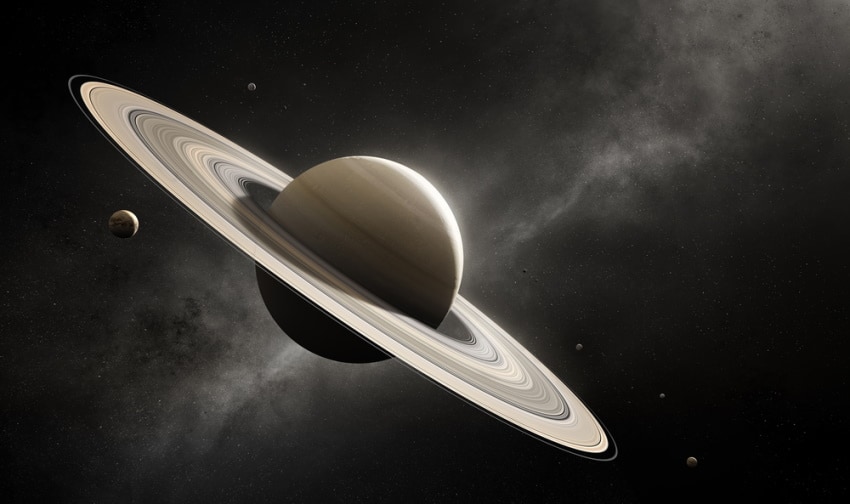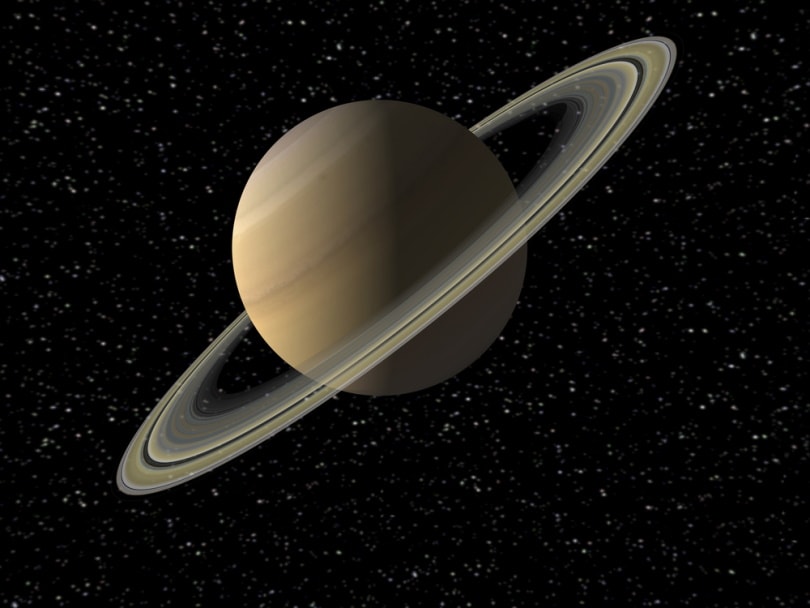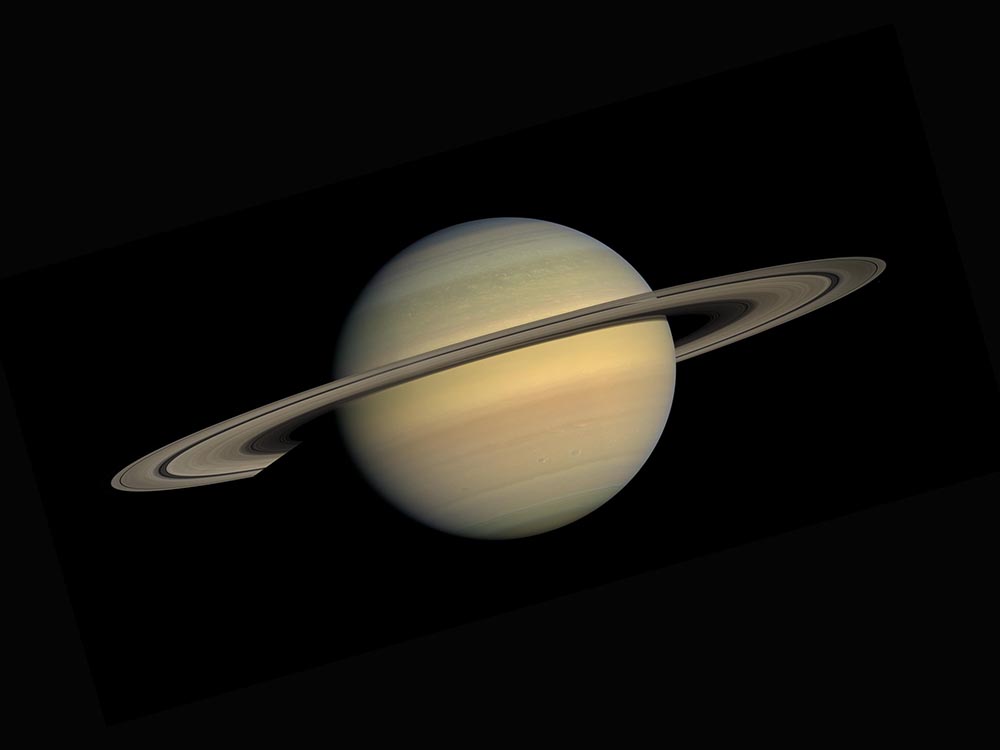How Big Is Saturn? The Impressive Answer!
Last Updated on

Our sixth planet from the sun is famous for its luminant rings and bright yellow color, but have you ever wondered how big Saturn really is? To answer that, we’ll need to translate the size of Saturn to physical metrics, like its radius and diameter. The radius of this planet is more than 36,000 miles long, which means that the diameter far exceeds 70,000 miles. That’s staggeringly large!

How Big Is Saturn in Comparison to Earth?
If we compare our miniature world to the mighty Saturn, the size difference is quite dramatic. The Earth has a radius of just under 4,000 miles, whereas the ringed planet has a radius of approximately 36,184 miles—that’s over nine times as wide! In fact, you could fit 700 Earths inside of Saturn with room to spare.

Is Saturn One of The Largest Planets?
The title for the largest planet in our solar system goes to the fifth planet, Jupiter. However, its next-door neighbor, Saturn, isn’t far behind since it’s the second-largest planet. In contrast, the smallest planet is Mercury, which is also the closest to our Sun.
What Are Saturn’s Rings Composed Of? How Big Are They?
Saturn has distinct rings that exhibit several different colors and shades. They are made out of ice, rock, and dust particles that constantly orbit the planet. They were discovered in 1610 by Galileo Galilei, who saw them with his newly developed telescope for viewing space objects. The individual pieces that make up the rings can vary widely in size; some are small dust specs while others are the size of a building! If you wanted to know how thick the rings are, you might be slightly surprised. The rings only range from 30 to 300 feet wide.
How Far Out Is Saturn?
According to NASA (the National Aeronautics and Space Administration), the sixth planet in our solar system is an average distance of 886 million miles from the Sun, and it takes around 80 minutes just for light to hit the planet’s atmosphere.

More Interesting Facts About Saturn
- Saturn doesn’t have a tangible crust as Earth does, and you wouldn’t be able to stand on it. This is because the planet primarily consists of gas elements such as hydrogen and helium.
- The high rotational speeds of Saturn make its entire day just 10.7 hours long. It has the shortest day of any planet in our solar system and is less than half of Earth’s 24-hour day.
- Despite the short days, Saturn takes nearly 30 years to complete a full orbit around the sun.
Featured Image Credit: Johan Swanepoel, Shutterstock
About the Author Robert Sparks
Robert’s obsession with all things optical started early in life, when his optician father would bring home prototypes for Robert to play with. Nowadays, Robert is dedicated to helping others find the right optics for their needs. His hobbies include astronomy, astrophysics, and model building. Originally from Newark, NJ, he resides in Santa Fe, New Mexico, where the nighttime skies are filled with glittering stars.
Related Articles:
What Is the Best Binocular Magnification for Hunting? Optical Features Explained
Can You Use Binoculars to Look At Stars? How to Choose the Right Pair
15 Crucial Facts About Ultraviolet Rays & the Sun
What Constellation Is Spica In? The Interesting Answer!
10 Interesting Leo Constellation Facts, Myths, and FAQs
15 Interesting Pegasus Constellation Facts, Myths, and FAQs
6 Interesting Sagittarius Constellation Facts, Myths, and FAQs in 2024!
What Are Constellations? Where Did They Come From?
